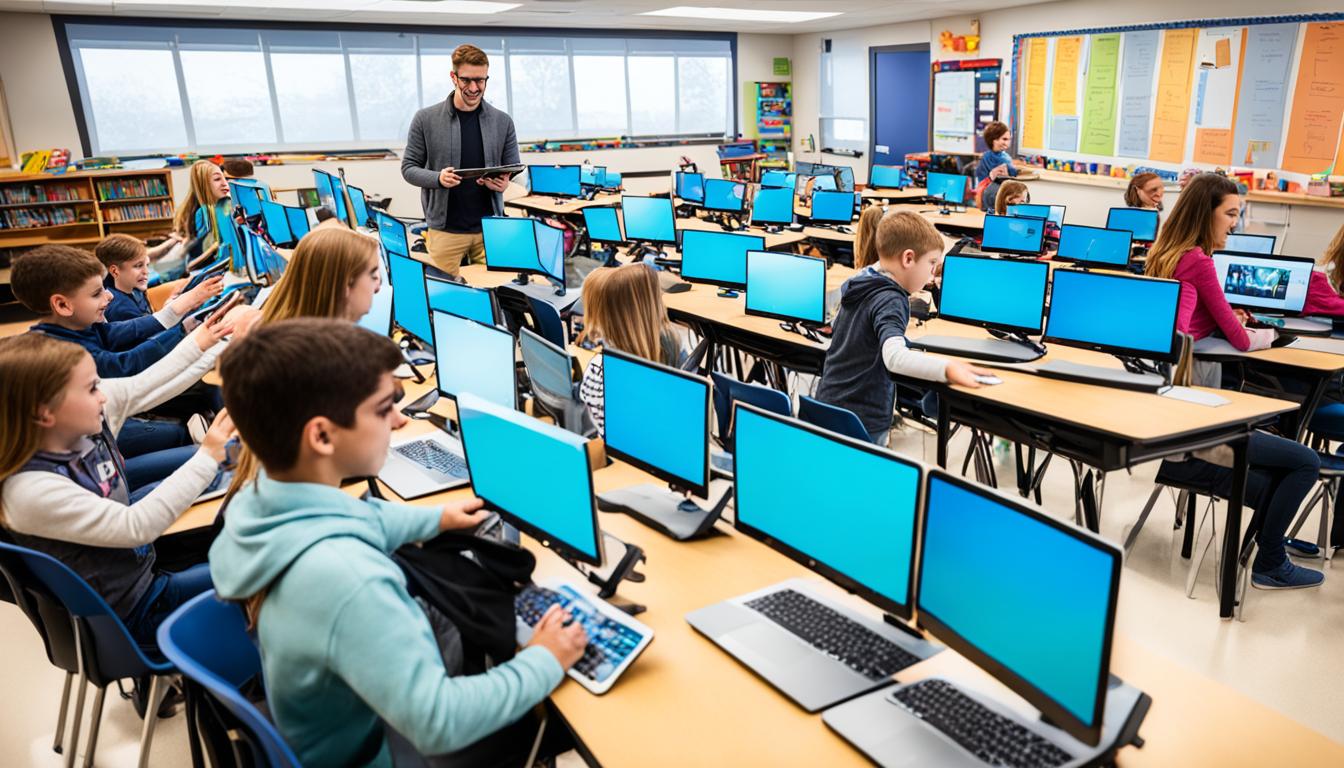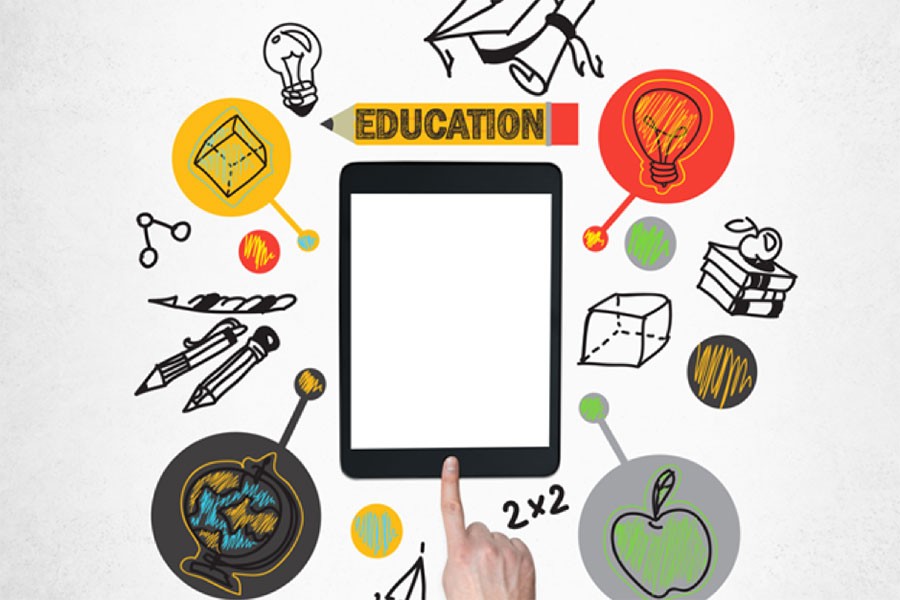Gain Assurance with Flexible Insurance Options Tailored for You
Gain Assurance with Flexible Insurance Options Tailored for You
Blog Article
Comprehensive Business Guides for Advancing Technology Education in Schools and Colleges
The assimilation of innovation education and learning into institution and university educational program has become a critical crucial in preparing pupils for a progressively digital workforce. Extensive company overviews play an essential role in this transformation by laying out the needed structures for efficient program application, fostering vital sector partnerships, and gauging educational end results. As instructional institutions strive to align themselves with market needs, the opportunities and challenges provided by these guides merit a closer evaluation. AI Tools. What details approaches can be taken on to optimize their influence on both pupils and educators?
Value of Technology Education And Learning
As technology proceeds to evolve at an extraordinary pace, the significance of modern technology education has actually come to be increasingly obvious in today's culture. The integration of modern technology into different elements of life demands that people possess a foundational understanding of technical concepts and applications. This expertise not just improves employability but likewise promotes critical thinking and problem-solving skills essential for navigating a dynamic workforce.
In educational institutions, innovation education furnishes trainees with the capacity to adapt to quick adjustments in sectors driven by technology. It motivates creativity and encourages students to engage with arising modern technologies, from man-made intelligence to information analytics. Technology education and learning promotes electronic proficiency, which is essential in an age where information is easily offered yet usually deceptive.

Secret Components of Effective Guides
Efficient guides for modern technology education have to include several key elements to guarantee that learners obtain one of the most from their experiences. First, a well-defined curriculum is essential, detailing the purposes, discovering outcomes, and the abilities to be developed. This curriculum needs to be frequently upgraded to mirror the quickly advancing technological landscape, making certain significance and applicability.
Second, comprehensive resources that consist of textbooks, on-line products, and hands-on devices are vital. These sources ought to be accessible and varied, accommodating various discovering designs and preferences. In addition, incorporating real-world scenarios and study can improve understanding and interaction.
Third, evaluation techniques must be included to assess student development successfully. These evaluations should be varied, including cumulative and formative analyses that align with the discovering purposes.
In addition, professional advancement chances for teachers are vital. Training programs and workshops can equip instructors with the most up to date instructional methods and technical developments.
Lastly, fostering a joint learning environment urges peer interaction and expertise sharing. By consisting of these crucial components, overviews for innovation education and learning can substantially boost the learning experience, preparing pupils for future difficulties in a progressively electronic globe.
Structure Industry Collaborations
Building strong sector collaborations is an essential element of boosting technology education and learning. These collaborations between universities and services create a dynamic ecological community that profits companies, pupils, and instructors alike. By cultivating partnerships with sector leaders, schools and universities can straighten their curricula with the developing demands of the job market, making sure that trainees acquire pertinent abilities and understanding.
The development of teaching fellowships, instructions, and mentorship programs acts as a keystone of these collaborations. Such chances provide trainees with hands-on experience, improving their employability and functional understanding of modern technology applications. In addition, market partners can supply insights into arising patterns and technological developments, allowing instructors to adapt their teaching approaches appropriately.
Furthermore, partnerships can promote accessibility to resources, such as tools, software application, and funding for study tasks. These payments enrich the finding out setting and allow institutions to remain at the center of technical advancement. Ultimately, constructing robust industry collaborations is essential for growing a skilled labor force that fulfills the demands of today's rapidly transforming technological landscape, while additionally driving economic development and competitiveness in the more comprehensive neighborhood.
Implementing Modern Technology Programs
Executing technology programs within universities requires a critical method that prioritizes both curriculum advancement and source allocation. To launch successful modern technology combination, establishments should initially assess their existing facilities and identify spaces in resources, consisting of hardware, software application, and personnel training. This assessment enables schools and colleges to develop a tailored plan that aligns with their certain instructional objectives.
Following, it is important to establish a detailed educational program that includes arising modern technologies and sector standards. Collaborating with educators, market professionals, and stakeholders can make sure that the educational program continues to be pertinent and reliable in preparing trainees for the workforce (Insurance). Additionally, expert advancement for faculty is vital, as it equips educators with the abilities essential to efficiently show brand-new innovations
In addition, institutions must stress the importance of hands-on discovering experiences, such as workshops and labs, that allow trainees to use theoretical knowledge in useful settings. This experiential approach improves involvement and fosters critical thinking. Safeguarding sustainable funding through grants and collaborations can aid broaden and preserve modern technology programs, making sure long-term success and flexibility in an ever-evolving technical landscape.
Gauging Success and Outcomes
Analyzing the success and end results of technology education and learning programs is necessary for confirming their effect and leading future enhancements. Efficient measurement structures ought to incorporate both measurable and qualitative metrics, giving a comprehensive view of program efficiency. Secret efficiency indications (KPIs) such as trainee enrollment numbers, retention prices, and course completion percentages provide useful measurable information.

Incorporating standard assessments can better review students' technical competencies and readiness for the labor force. Benchmarking versus similar institutions permits contextually pertinent contrasts, highlighting locations for growth.
Eventually, the continual assessment of technology advice education and learning programs promotes a society of renovation, ensuring that they evolve in alignment with market needs and educational standards. By methodically determining success, institutions can not just demonstrate responsibility to stakeholders however additionally improve their offerings, thus enriching the discovering experience and preparing pupils for the ever-changing technical landscape.
Final Thought

The integration of modern technology education right into school and college click for more info educational program has actually come to be a critical imperative in preparing trainees for a significantly electronic workforce.As modern technology continues to evolve at an unprecedented rate, the importance of technology education has come to be significantly obvious in today's society.In educational institutions, modern technology education and learning outfits pupils with the capability to adapt to fast adjustments in sectors driven by advancement. By prioritizing technology education and learning, institutions can cultivate a generation of informed people qualified of leveraging innovation for personal and societal innovation. The execution of durable assessment techniques allows establishments to gauge success and results, ultimately improving the general effectiveness of innovation education efforts and preparing trainees for future obstacles.
Report this page